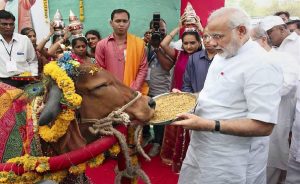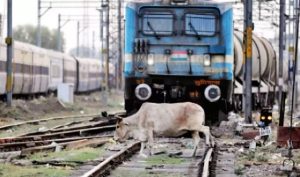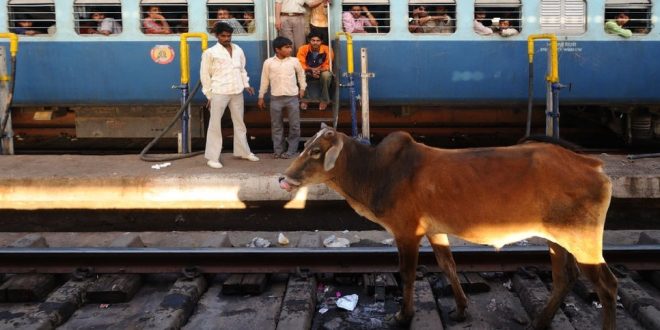10-04-2023
Bureau Report + BBC
NEW DELHI: Indian trains ran over more than 13,000 cattle in 2022 according to data released by the government.
This is up 24% from 2019, when 10,609 cattle were hit by trains, according to numbers shared by nine of 17 railway zones in India with the BBC.
 Cattle deaths from train collisions isn’t new in India, though the media’s scrutiny of these deaths has increased over the past few years as the country launches newer trains.
Cattle deaths from train collisions isn’t new in India, though the media’s scrutiny of these deaths has increased over the past few years as the country launches newer trains.
In 2019, a semi-high speed Vande Bharat Express train broke down just a day after it was flagged off by Prime Minister Narendra Modi. At the time, a railways spokesperson was quoted as saying that the train may have struck cattle on the line.
Last October, Vande Bharat Express trains hit cattle three times in the western state of Gujarat, causing delays and damage. And last week, another flagship train in the series was damaged after it ran into cattle during a trial run ahead of its scheduled launch.
housands of Indians take their cattle to graze on patches of grass alongside railway tracks. Many cattle owners also live close to the tracks or herd their cattle across railway tracks to get quickly from one place to another.
The vast 67,546 mile network of the Indian Railways that largely cuts through a rural landscape is almost totally unfenced and allows cattle of all kinds to roam across tracks freely. Cattle grazing on grass or garbage along the tracks often end up getting hit.
 India’s sturdy trains have largely been able to withstand these incidents, though some of the newer trains have needed repairs after their nose and front panel were affected by these collisions.
India’s sturdy trains have largely been able to withstand these incidents, though some of the newer trains have needed repairs after their nose and front panel were affected by these collisions.
Then there’s also the inconvenience to passengers.
A railways press release issued last October says that such incidents “adversely affected rail operations” and increased “the possibility of rail accidents including derailments”.
The statement further states that these accidents, “endanger passenger safety and may lead to disruption of rail traffic and loss to rail property.”
 Pressmediaofindia
Pressmediaofindia




